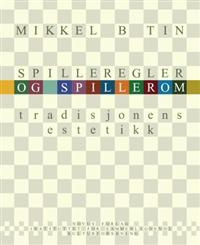Bokanmeldelse: Mikkel B Tin (2011) Spilleregler og spillerom. Tradisjonens estetikk
DOI:
https://doi.org/10.7577/formakademisk.505Sammendrag
Mikkel B. Tin intresserer seg for estetiske dimensjoner i kunsten generelt og i folkekunsten spesielt. I boken Spilleregler og spillerom belyser han de skapende prosesser som drives fram av individets estetiske og håndverksmessige forhold til tradisjonelle håndverk og formspråk. Hans mål har vært å undersøke tradisjonen og kunsten i deres møtepunkt, et møtepunkt han kaller tradisjonens estetikk. Som bokens tittel signaliserer finnes det i denne sammenheng noen rammer å forholde seg til; spilleregler, men også en individuell frihet vi alle forventer oss at kunstutøvere må ha; spillerom. Boken gir mange empiriske eksempel på hvordan ulike utøvere forholder seg til tradisjonen. Ved gjenstandsanalyser og intervjuer studeres den tjekkiske kunstneren Tomás Smetanas tegninger, broderte kraver fra Øst-Telemark, utskårne mønster på treportaler i Romania, håndklær fra Ukraina og ståltrådsarbeider fra Slovakia. Til slutt behandles spilleregler og spillerom for grafitti, også her med et internasjonalt perspektiv. Boken inneholder et rikt bildemateriale, beskrivelser av variasjon i mønster, farge- og materialbruk i ulike arbeider, samt lokalt og internasjonalt sammenlignende analyse av disse arbeidene. Jeg finner boken interessant fordi Tin dreier diskusjonen bort fra at det å ta utgangspunkt i tradisjonens håndverk klassifiseres som kopiering og derfor ikke bidrar til utvikling av individets skapende evner. Han peker på hvordan tradisjonelle uttrykk i ulike materialer både kan lære oss noe og åpne for utvikling av egne uttrykk. Å ta opp en tradisjon betyr ikke å kopiere den, men å spille sammen med andre innen et visst spillerom der individets egne erfaringer påvirker det estetiske resultatet, er Tins budskap. Jeg forstår godt – og liker – assosiasjonen til kort- eller brikkespill der man jo tar utgangspunkt i et sett regler. Hvilke trekk man gjør eller kort man legger avhenger likevel av den aktuelle situasjonen og hvordan de andre spiller, men også hvilke erfaringer man har fra andre ganger man har deltatt i spillet. I Tins empiriske materiale inngår også eksempel der f.eks. spesielle tekstiler inngår i en seremoni – der spillerommet også er et skuespill!
Til slutt vil jeg gjerne fremheve rutenettet Tin har satt på sine empiriske studier når han siterer Kant, Merleau-Ponty, Gadamer og Husserl. Med hjelp av de tre sistnevnte, påpeker Tin at tradisjonen, noe som betyr overføring, er ikke en gitt – det er alltid opp til oss å bære den videre. I bokens ånd, tolker jeg at det er opp til oss å bestemme hvilket spill vi ønsker å spille. Boken Spilleregler og spillerom. Tradisjonens estetikk handler om tradisjon, estetikk og kroppslige opplevelser av håndverk. Boken er en interessant kilde for konkrete og filosofiske diskusjoner om tradisjon som inspirasjon.

Nedlastinger
Publisert
Hvordan referere
Utgave
Seksjon
Lisens
- Forfatteren(e) beholder sin opphavs- og kopieringsrett til eget manuskript, men gir tidsskriftet varig rett til 1) å fremføre manuskriptet for offentligheten i den opprinnelig publiserte digitale form, og 2) å registreres og siteres som første publisering av manuskriptet.
- Forfatteren må selv forvalte sine økonomiske kopieringsrettigheter overfor eventuell tredjepart.
- Tidsskriftet gir ingen økonomisk eller annen kompensasjon for innsendte bidrag, medmindre det er gjort særskilt avtale om dette med forfatteren(e).
- Tidsskriftet plikter å arkivere manuskriptet (inklusive metadata) i den opprinnelig publiserte digitale form, i minst ett dertil egnet åpent tilgjengelig langtidsarkiv for digitalt materiell, som for eksempel i de norske universitetenes institusjonsarkiv innen rammen av NORA-samarbeidet.
Verket vil bli publisert OpenAccess med en Creative Commons 4.0-lisens som tillater alle å lese, dele og tilpasse innholdet, også kommersielt, under lisensvilkårene:
Dette verket må tilskrives/ krediteres på riktig måte, en lenke må gis til CC-BY 4.0-lisensen, og endringer som er gjort må angis på en rimelig måte, men ikke på noen måte som antyder at lisensgiveren støtter deg eller din bruk.



